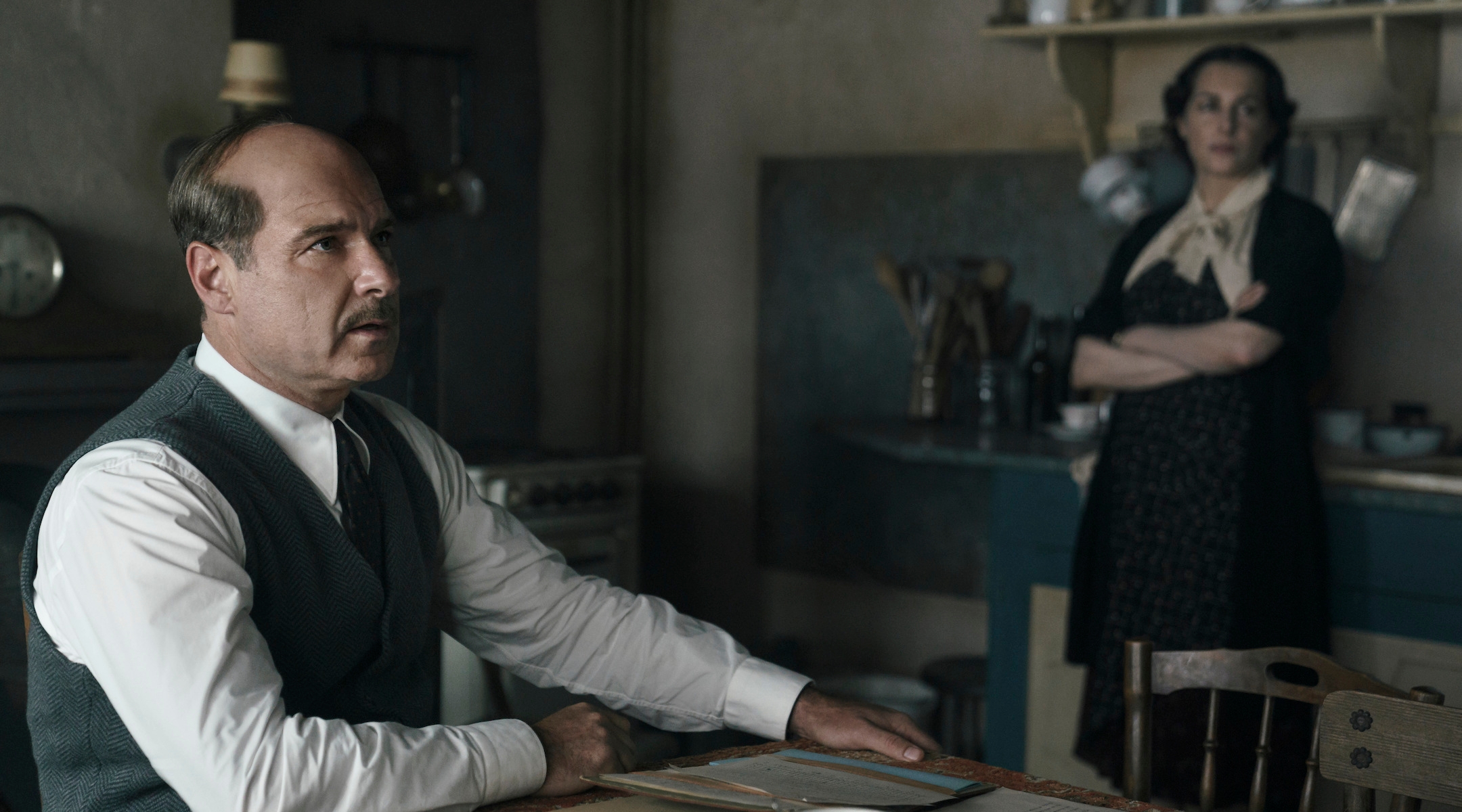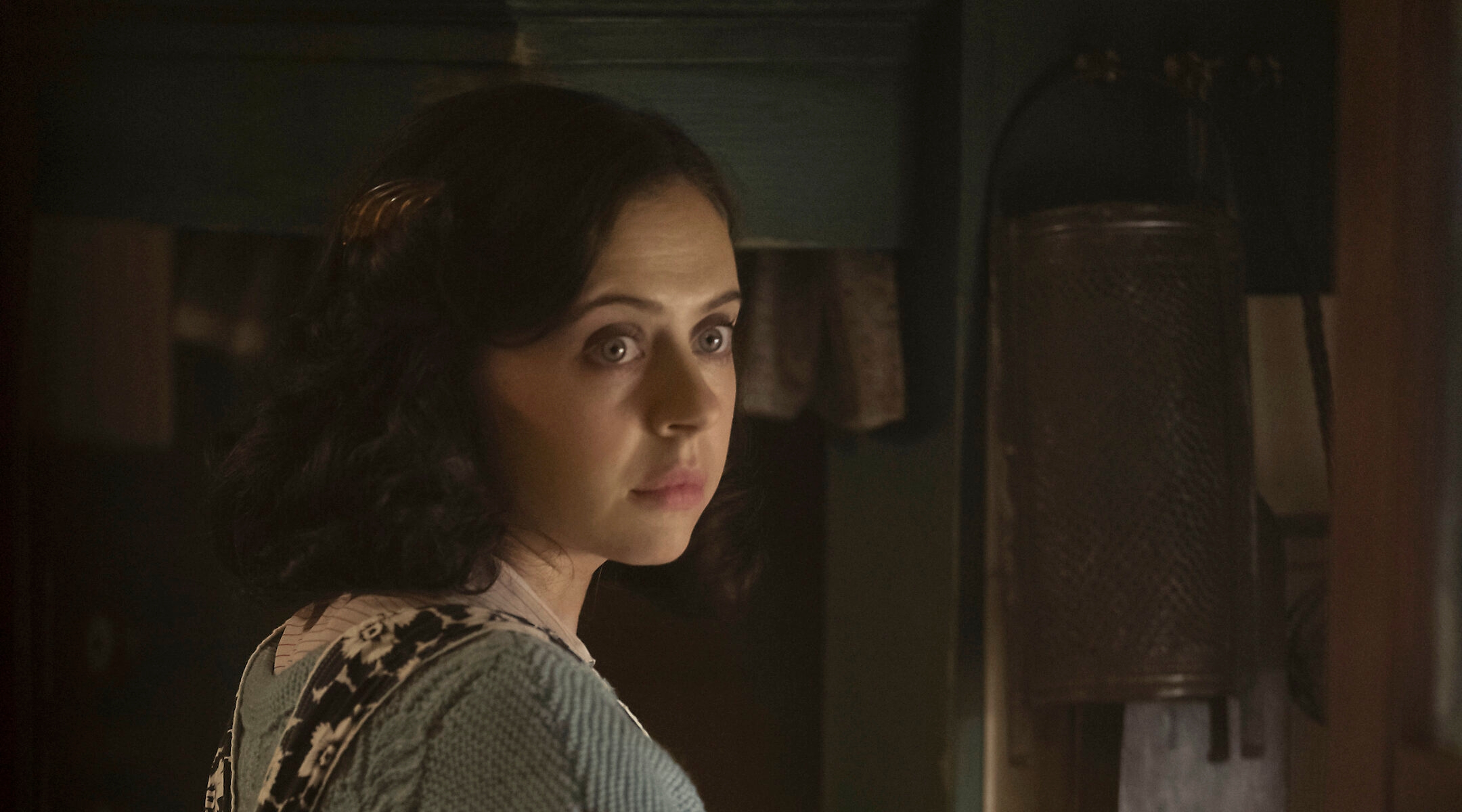(JTA) — The short life of Anne Frank has inspired generations of filmmakers and television producers. The list of past productions range from “The Diary of Anne Frank” (1959), whose director George Stevens witnessed Nazi occupation as a U.S. army officer, to the Academy Award-winning documentary “Anne Frank Remembered” — featuring the only known footage of Anne — to the Emmy Award-winning dramatized miniseries “Anne Frank: The Whole Story” (2001).
On Monday night, viewers will get another TV version. But “A Small Light,” an eight-episode series premiering on National Geographic and streaming Tuesday on Disney+, tells the story from a new perspective: through the eyes of the woman who hid the Frank family.
Miep Gies was an independent 24-year-old with a busy social calendar and a dance club membership when she began working for Anne Frank’s father Otto in 1933 at Opekta, his successful jam business in Amsterdam. As Jews were rounded up and deported from the Netherlands in 1942, her Jewish boss asked if she would be willing to hide his family in an annex above the office, and she did not hesitate.
“A Small Light” stars Bel Powley as Gies, Joe Cole as her husband Jan Gies and Liev Schreiber as Otto Frank. It’s named for a quote from the real Gies, who once said that she did not like to be called a hero because “even an ordinary secretary or a housewife or a teenager can turn on a small light in a dark room.”
That metaphor had literal meaning for the Frank family and four others in the secret annex, who spent two years in a dark 450-square-foot space behind a hinged bookcase. Gies, her husband and four other employees of Otto Frank secretly kept eight Jews alive while running his business downstairs. Gies brought them food and library books, using black market ration cards and visiting several different grocers to avoid suspicion. Anne Frank said in her diary, “Miep is just like a pack mule, she fetches and carries so much.”
In the series, the “dark room” is seen less than Gies’ frenzied bicycle trips across Amsterdam, as she tries to sustain the appearance of a normal life. Her secret pushes her away from friends and family, while her marriage strains under the weight of ever-looming disaster. The creators of “A Small Light” sought to recreate a hero as a modern, flawed, at times even annoying person.
“She’s not some kind of saint,” executive producer Joan Rater told the Jewish Telegraphic Agency. “She had moods, she had a new marriage, she wanted to hang out with friends. She wanted to take a day off and she couldn’t.”
“I think everyone can relate to Miep,” said Powley, an English-Jewish actress known for starring in several British shows and in American films such as “The King of Staten Island.” “She was just an ordinary person in extraordinary circumstances.”
Although “A Small Light” is rife with tense scenes and suspense, the producers fashioned it with young audiences in mind. The show conspicuously avoids the explicit violence and horror typically expected of its subject matter, leaving out concentration camps and murders. Rater and co-creator Tony Phelan wanted children like their own to watch the series. While they were writing it, their daughter was the same age as Anne was when she was writing her diary.
Some young viewers have seen Anne’s story being swept up in literary purges across U.S. school districts, as part of the debate over what should be taught in American classrooms. Earlier this month, a Florida high school removed an illustrated adaptation of her diary after determining that references to her sexuality were “not age appropriate.” The same edition was previously yanked from a Texas school district, although it was reinstituted after public outcry. Meanwhile, a Tennessee school board banned “Maus,” Art Spiegelman’s Pulitzer Prize-winning graphic novel about his father’s experience in the Holocaust, after objections over curse words and nudity last year.
The name “Anne Frank” has long been synonymous with Holocaust education as her diary remains one of the world’s most-read books, with translations in over 70 languages. But the “relatable” rescuer presents another appealing way to teach children about one of the most wretched chapters in human history, said Brad Prager, a professor of German and film studies at the University of Missouri.
“It is the message that people like to hear,” Prager told the JTA. “If you ask a fourth-grader why we watch TV and movies — well, this is so that you can learn to do the right things, or you can learn that in certain circumstances anyone can be a hero.”

Liev Schreiber plays Otto Frank and Amira Casar plays Edith Frank in “A Small Light.” (National Geographic for Disney/Dusan Martincek)
A broader lens on the Netherlands during World War II is less palatable. The Germans and their Dutch collaborators implemented a highly effective system of persecution: Between 1942 and 1944, about 107,000 Dutch Jews were deported primarily to Auschwitz and Sobibor, then murdered. Only 5,200 of them survived.
Although Gies did everything she could to save the Jews in her care, the unwritten ending to Anne’s diary is well-known. Three days after her last entry in August 1944, Dutch police officers led by SS officer Karl Josef Silberbauer raided the annex. Gies escaped arrest by observing that she and Silberbauer shared a hometown.
“My luck was that the police officer in charge came from Vienna, the same town where I was born,” she said in a 1997 interview with Scholastic. “I noticed this from his accent. So, when he came to interrogate me, I jumped up and said, as cheerfully as I could, ‘You are from Vienna? I am from Vienna too.’ And, although he got very angry initially, it made him obviously decide not to arrest me.”
In a valiant last-ditch effort, Gies walked into the German police office the next day and attempted to buy her friends’ freedom. She was unsuccessful.
Gies found Anne’s notebooks and papers strewn on the annex floor. Without reading them, she gathered and tucked the writings into a drawer, hoping to return them to their owner. Germany had all but lost the war already, with Allied troops less than 250 miles from Amsterdam.
The Franks were packed on the last train ever to leave the Westerbork transit camp for the Auschwitz extermination camp. Otto was separated from his wife Edith and daughters Anne and Margot on the Auschwitz platform. In October, the girls were transported to Bergen-Belsen, and Edith succumbed to starvation in January 1945. Her daughters died of typhus a month later, when Anne was 15 years old.
Some studies have suggested that knowledge about the Holocaust is diminishing. In 2020, the Claims Conference found that 63% of Millenial and Gen Z Americans (ages 18-39) did not know that six million Jews were murdered in the Holocaust. More than 10% did not recall ever hearing about the Holocaust, while 11% believed that Jews caused it. Another Claims Conference survey reported that despite living in the country where Anne hid from the Nazis, a majority of Dutch people did not know the Holocaust took place there.
“In a time that antisemitism is on the rise and there are more displaced people in the world than there ever have been before, it couldn’t be a better time to re-explore this part of history, but through the lens of this ordinary young woman,” said Powley.
While “A Small Light” celebrates the power of the individual, the fate of Anne Frank also represents the failure of the whole world, said Prager. By centering Gies’ perspective, he said, the series risks making Anne a peripheral character in her own brutally aborted story.
“When you decenter Anne Frank, one thing is that you lose the Jewish perspective on the persecution,” he said.
Otto Frank, the sole survivor from the annex, appeared at Jan and Miep Gies’ doorstep after the war and ended up living with them for over seven years. In July 1945, Gies watched as he received the notice that his children were dead.
“He took it in his hands and suddenly he became eerily quiet,” Gies said in an interview for the Anne Frank House. “You cannot explain it, it was a silence that speaks. I looked up. He was white as a sheet. And he handed me the letter.”
Gies read the piece of paper, stood up and opened her desk drawer. “I took all the diaries, with all the separate sheets and everything and handed them over to Mr. Frank,” she said.
She told him, “This is your daughter Anne’s legacy.”
In 2010, Gies died at 100 years old. Every year on Aug. 4 — the day the Franks were arrested — she stayed at home, drew her curtains and did not answer the phone or doorbell.
Powley believes the show’s angle gives a fresh perspective on “your mom’s dusty copy of Anne Frank’s diary.” She approached the role of Gies with a heavy sense of responsibility.
“I feel a deeper connection to this story than I have with other projects,” she said. “This offer came to me on Holocaust Memorial Day and it immediately had that special feeling to it. My grandma, the Jewish matriarch of my family, died during COVID. I feel that she would be proud.”
JTA has documented Jewish history in real-time for over a century. Keep our journalism strong by joining us in supporting independent, award-winning reporting.






